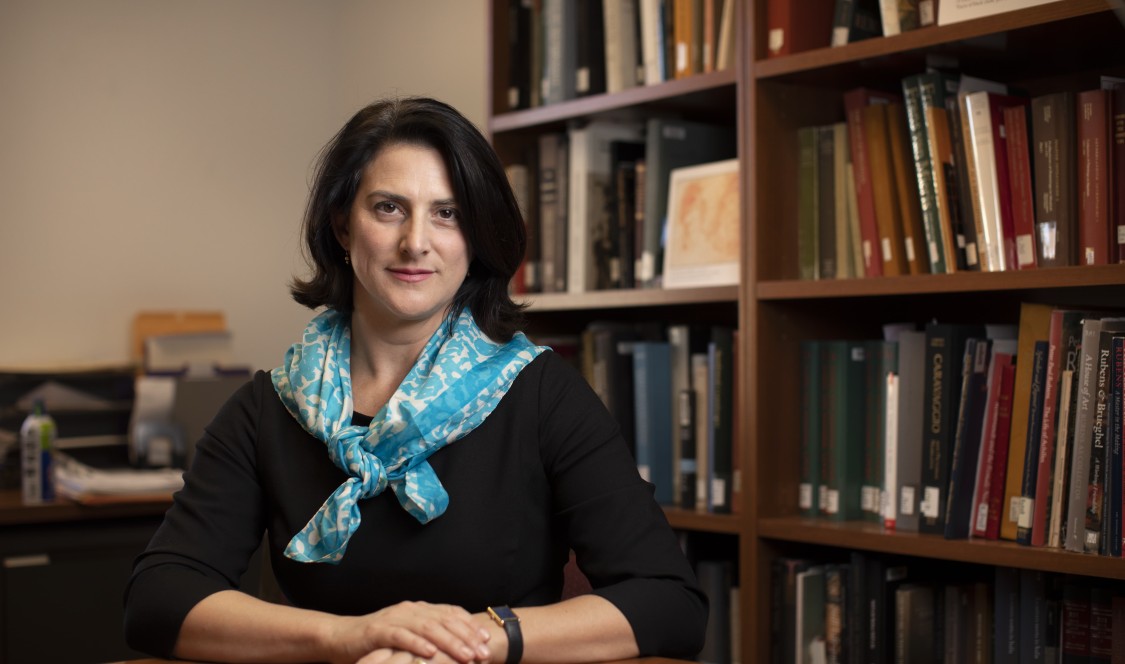Rubens, Rembrandt and Drawing in the Golden Age highlights stunning new exhibition
Old Master drawings have been studied for hundreds of years – their apogee was from 1550 to 1700 – so it could seem that there’s not much new to glean from them. Not so. Victoria Sancho Lobis, a lecturer in the History Department and Joint Art History Program, has curated a stunning new exhibition, Rubens, Rembrandt and Drawing in the Golden Age at the Art Institute of Chicago, and authored its exhaustive catalog.
The exhibition opened in late September and will be on display through Jan. 5, 2020. It is the museum’s first presentation of its extensive collection of Dutch and Flemish drawings, displaying renowned works with gems excavated by Lobis from the museum’s storage vaults.
The exhibition and book are the rewards of five years of art history detective work by Lobis, who was a curator at the museum before coming to Claremont McKenna in fall, 2017.
The Art Institute has held an abundance of Old Masters since the 1920’s, when collector William Gurley donated several thousand drawings he “bought seemingly by the pound in trips to London,” Lobis said.
Many had never been authenticated nor exhibited. Some needed extensive conservation work. The museum also had added to its collection over the decades. Lobis proposed newer acquisitions, including a Peter Paul Rubens drawing and a Hendrick Goltzius red chalk work that was used on the book cover.
An expert on 17th century European paintings, prints and drawings, Lobis selected 120 objects for the exhibition, which features drawings, selected seventeenth-century paintings and prints as comparative material.
Determining the provenance, date created, or correcting earlier attributions was a challenge. Drawings typically have less documentation than paintings and sculptures, because in household inventories, they were often lumped together and catalogued in groups, instead of individually.
Even more than the proverbial needle in the haystack, Lobis said. “sometimes, you already have the needle and need to see what it matches.”
To identify the artist of an un-attributed work, “you do your homework, rely on your instincts and have to be willing to take a risk. Someone who writes a monograph on one of these artists will either agree to include the work or change the attribution again. You put that information forward into the world and hope that people engage with it.”
Her sleuthing turned up happy surprises. A pen and ink figural study, Apollo, circa 1600, was effectively resurrected and attributed to artist Jan Muller, who worked in the circle of Hendrick Goltzius. Another overlooked drawing, by Abraham Bloemaert, a well-known Dutch painter and printmaker, “was just sitting in the archival file folder,” and also had never been exhibited.
Lobis found a way to elegantly merge these lesser-known works with marquee items, such as one of the world’s most famous Rembrandt drawings, Seated Female Nude.
“How do you put together a project that treats this sort of celebrity drawing with the adoration and respect it deserves,” she said, in describing her curatorial dilemma, “and also find a way to bring forward objects that have received very little attention?”
Her solution in the 354-page beautifully printed catalog was to group works by descriptive and narrative chapters instead of organizing the book by artist or date. So, there are chapters on topics such as “The Live Model,” “Under the Master’s Watchful Eye” and “The Independent Landscape,” that give examples of works from many artists to illustrate each theme.
The exhibition and catalog required experts in X-ray fluorescence spectroscopy for pigment analysis, and conservators, framers, preparators, catalogers, indexers, proofreaders, publishing art directors and more. Lobis had some help with deciphering inscriptions, but she herself is fluent in five languages other than English: Dutch, French, German, Spanish and Italian. Claremont McKenna was acknowledged for library support and for the faculty writing retreats organized by Adrienne Martin of the Philosophy Department.
At Claremont McKenna, Lobis has been teaching a freshman humanities seminar, Collecting and Collections: Art and Society, that attracts students of different majors and diverse interests. Other courses she teaches include Rembrandt’s World and Latin American Art: 1500-1800.
Although she’s relatively new to the faculty, she has had ties to the community for years, as her husband Seth Lobis, an associate professor of literature, has taught at CMC for 12 years. “I’m very grateful to have an intellectual home here at Claremont,” she said.
So, what’s next? Lobis is collaborating with multi-media artist Cauleen Smith and the San Diego Museum of Art on a March 2020 exhibition examining a famed work in the museum’s collection, Spanish Baroque painter Juan Sánchez Cotán’s still life Quince, Cabbage, Melon and Cucumber. Smith is making a film about the painting, museum curator Michael Brown is writing an essay about Spanish still life painting and Lobis is writing an essay about how works from the 17th century remain relevant today.
Said Lobis: “It’s all about how we can ask new questions about objects that are exceedingly well studied.”
-Allison Engel

